The US Air Force say that flying began on May the 7th for the second phase of the Light Attack Experiment.
“Pilots are flying the Sierra Nevada/Embraer A-29 Super Tucano and the Textron Aviation AT-6B Wolverine during a three-month, live-fly experiment to gather additional information about aircraft capabilities, as well as partner nation interoperability, prior to a potential light attack purchase.”
“This second phase of experimentation is about informing the rapid procurement process as we move closer to investing in light attack,” said Lt. Gen. Arnie Bunch, military deputy, Office of the Assistant Secretary of the Air Force for Acquisition.
“If we can get light attack aircraft operating in permissive combat environments, we can alleviate the demand on our 4th and 5th generation aircraft, so they can be training for the high-end fight they were made for.”
Chief of Staff of the Air Force Gen. David Goldfein told members of the Senate Armed Services Committee:
“We’re looking at light attack through the lens of allies and partners. A big part of the Light Attack Experiment is a common architecture and an intelligence-sharing network, so that those who would join us would be part of the campaign against violent extremism.”
During this phase of experimentation, aircrew include fighter, attack, or special operations pilots, plus test pilots and flight engineers from the US Air Force, Air National Guard, and Air Force Reserve. Collectively, they average more than 1,000 flight hours and more than 100 combat missions, and all pilots have been instructors in one or more aircraft.
The US Air Force say that flight scenarios will consist of both day and night missions in air interdiction, close air support, armed overwatch, and combat search and rescue. Maintenance observers will focus on flightline and in-shop maintenance, to inform sustainment and product support requirements.
The experiment is understood to be part of a broader effort to explore cost-effective attack platform options under the Light Attack Experimentation Campaign led by the Air Force Strategic Development Planning and Experimentation Office at Wright-Patterson AFB, Ohio.
The first phase of the Light Attack Experiment took place in August 2017 at Holloman AFB, with four models of light attack aircraft, according to the US Air Force website.



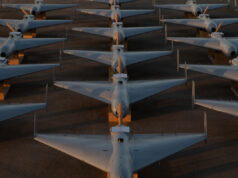
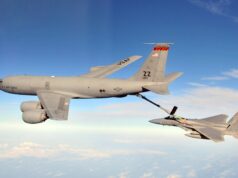
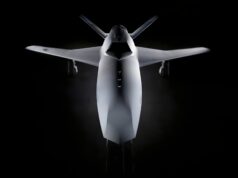

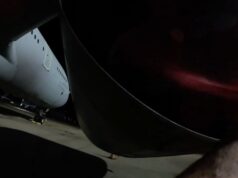
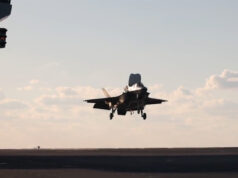
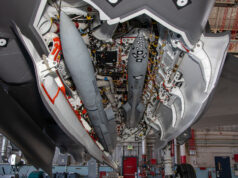

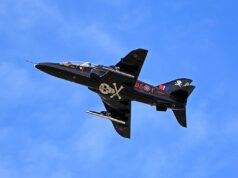
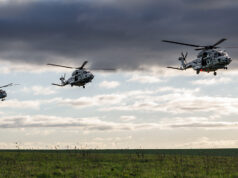

I was thinking about this a few years ago. It makes some sense to have cheap easy to maintain aircraft that could do a reasonable ground attack role in environments where air superiority is guaranteed (Most conflicts we have been involved in recently). In fact it may well be easier to support ground troops from a slower aircraft.
well aren’t you insightful. this is exactly what the Americans want to achieve.
Could a suitably upgraded version of the Hawk fulfil this role??
Andrew R, that’s exactly what I was going to say.
There is already a version that we sell for export that is used in this role for other air forces. The Hawk 200 can carry Maverick missiles along with Sea Eagle anti ship missiles, various air to air missiles and Paveway bombs.
Many RAF hawks are fully fighter combat ready with sidewinder missiles India us them like a full blown fighter .. They are only classed trainers so they can be sold to any countries .. Basically they are a full short range fighter and very capable
[…] post Second phase of US Air Force ‘Light Attack experiment’ underway appeared first on UK Defence […]
Well let’s see what the result of the experiment is first before you wet your knickers with excitement, bluesilver…
We’ve argued this on here before.
Total waste using high tech aircraft bombing people in the Middle East who can barely fight back, but equally they are not useful peer on peer.
Do we have the people spare to form additional squadrons of a light attack type like this? Probably not.
The U.S. probably has the personnel to do it !
Of course.
But like the RN using billion pound vessels against pirates instead of using T31 or Rivers having lower spec stuff like this in addition to high end seems sensible.
The US is actually having problems right now with pilot numbers. Plenty of people joining, every class is huge, but retention is terrible because commercial pay is so good.
I read somewhere that the cost of training military pilots is over $1 mm, if so, I don’t know why the military don’t tie them into long term contracts as happens in the private sector until they have recouped the cost of training.
Because then people don’t join, they are tied into 6 year contracts, any more than that and the people stop joining. In the Air Force as a pilot you make about $60k, if you get out and go to work for commercial you’ll make about $200k. Although the job doesn’t seem as exciting to me.
Isn’t this a job that 100SQN pilots and the FAA Hawk pilots (7**sqn) could do? we have the pilots I think, just probably not the funding for updated aircraft. Alternatively, couldn’t Wildcat do this if sufficient numbers existed?
No and no…. the Hawks are used for adversary training (2 squadrons wouldn’t be enough to sustain prolonged operations anyway) and we already have Apache in the AH role. I wouldn’t want to give up several fast jet squadrons for turbo props, just because we’ve been fighting insurgents recently doesn’t mean that will always be the case. We also have Reaper and a replacement for it in a few years time.
Would you have been happy flying in a Tucano over Kosovo/ Iraq during the 90s?
wasn’t suggesting they use the hawks or that we give up fast jet squadrons, just referencing 2xlarge squadrons which are not considered front line squadrons yet have front-line experienced pilots. the aggressor role will probably be privatized so these pilots could be used in newer hawks. however, it may well be a drone mission in the future as you say
Why replace a squadron or change anything just think more creatively. Lower tech planes will require less training to use , and if thought through properly and controls designed properly, why couldn’t a typhoon squadron also have light attack aircraft’s as an alternative option for when the typhoons would be overkill. Ultimatley they train on hawks etc, so shouldn’t have any problems flying them, assume the combat systems aren’t too different.
At risk of repeating myself, I’ve always thought that the RAF should have a low-tech, stealthy capability, rather than always having to spend zillions on each aircraft. Why re-invent the wheel? Just go for a slightly upgraded WWII dH Mosquito. Stick all sorts in it/on it. 4,000lbs-worth of boom-booms would be serious to anything on the receiving end.
too fast. how about an R.E.5 dropping 10ib bombs from the cockpit – there’s a few in museums which could be upgraded
Ha-ha! Point taken.
Seriously though, my point was that maybe we should not always try to re-invent the wheel and spend loads of dosh, and that some older tech was actually really good.
I was think OK no of a modern hawker hurricane but that would look much like the picture above
The RAF already has a counter insurgency aircraft – Reaper. It is designed to provide both surveillance and air strikes. The only problem it has is the cost of the weapons it uses (Hellfire and LGB) which are a bit overkill for dude on a moped, laser guided rockets may be the answer!
This effort is already OBE – it’s a knee jerk reaction a decade past its useful point. We may purchase a few squadrons and place them in the Air Guard and AFSOC but by the time time they wind this “competition” thing down and hem and haw for a while the window of opportunity will have passed since we’re concentrating on far greater threats. I can see a place for these in a contractor flown program though. We use them for everything else – why not CAS?
I write this with some experience – This was my area during my USAF career and the first unit to which I was assigned many years ago flew THIS raging beast…
http://www.nationalmuseum.af.mil/Visit/Museum-Exhibits/Fact-Sheets/Display/Article/196063/cessna-o-2a-skymaster/
Aloha!:D
Brits had the Beaver if I recall similar to that?
Hi Daniele,
if you are referring to the DeHavilland Beaver (which was flown by the USA and the USN) it’s about twice the size of our little O2’s. Very cramped. The firm I was with in Florida actually restored this DH U1 Otter which was the U2’s big brother for the Naval Aviation Museum at NAS Pensacola after it suffered severe damage during Hurricane Ivan in 2004. Looks pretty good doesn’t it? It was in terrible shape previously.
http://www.navalaviationmuseum.org/attractions/aircraft-exhibits/item/?item=u-1_otter
Here’s a link (see below) to the Commando Air Park at Hurlburt Field AFB Fl which is home to USAF’s 1st SOW. Some of the aircraft were there when I when through training there almost 4 decades ago. Of the newer ones, I’ve actually flown in or worked with the actual aircraft on display during my time in. My newly commissioned son asked if I felt old when I took him there and pointed out several of them. Then he ran… 😀
You can get a feel for that era looking at them.
Aloha!
Aloha!
Guess the link is in Purgatory…
😀
Excellent link thank you Hellions.
Thank you D.
http://www.hurlburt.af.mil/Portals/84/documents/Hurlburt%20Field%20Air%20Park/Airpark_Guide_2015.pdf
Maybe this link will stick today.
Aloha.
Whatever the field it is important to innovate. We should all be looking to try and stay one step ahead. A blended approach (both high end and low end) equipment whether that’s ships or aircraft would seem sensible to me – though when men and women are on the ground, they deserve the best.
Not sure I understand what the US are looking for with this, what can it do that a drone can’t with no risk to a pilot.
As for permissive environment I’m not sure one exists, the will always be man portable anti air missiles in any theatre.
If you are looking at close air support in a less permissive environment you have the eminently more potent ( and cheapish) attack helicopter.
As far as I can see this will just led to the loss or capture of a few pilots.
Rubbish idea sorry.
Hi Jonathan,
CAS is defined as the use of ordnance within 600 meters of friendlies. For an aircraft to release ordnance it must be first “Cleared Hot” by a controller on the ground – usually a JTAC (Prince Harry served as one during his first tour in the Stan). For safety reasons the strike must be under the positive control of the ground forces to prevent fratricide.
CAS missions can be either fixed or rotary wing (heavy rotary wing has a hardtime in the high altitudes of the Stan). USAF CAS missions are fixed wing and usually employ either a laser designator on target or a GPS “blip” using a laser rangefinder to ascertain the coordinates of the enemy which is then uploaded through the comm system to appear as a spot on the pilot’s HUD.
In very close in circumstances the control is verbal and the controller “talks” the pilot’s eyes onto the enemy and can use a smoke grenade or mortar round etc to visually ID or correct the aircraft onto the enemy. USAF JTACs have actually brought fire directly onto their own positions in Afghanistan during some particularly desperate hand to hand fighting.
“Better to die on your feet than on your knees” as you surely would if captured by them…
The concept is good an the Afghan National Air Force is making good use of it’s A-29s and AH6s but as I wrote above the opportunity time frame has passed IMO.
Aloha!
Essentially then something similar to the Argentinian Pucara? Long loiter time over combat area and inexpensive weaponry. Sounds like a simple enough idea
The laser guided rockets written about today on this site are a good example of that.
Aloha!
Dont these things remind you of WW2 aircraft?
With modern weapons, networks and sensors though.
Mass produced, cheap to maintain, lets give them away to friends and allies. Call it Foreign Aid.
The A 29 Super Tucano has been a success with the ANAF. It was provided to them through the Foreign Military Sales program ( Foreign Aid in other terms…). Can’t post a link due to having used up my one for the day.
Aloha!
I thought these light attack aircraft were too vunerable to MANPADS & light AAA.
If you equip the aircraft with defensive aids it stands a reasonable chance against most manpads. It’s the laser beam riders and optically guided that a really difficult to defend against.
To defend against AAA you need to be fast and low and if it’s radar/IR guided you need a stand-off weapon.
Another aspect of the light attack aircraft that hasn’t been mentioned is its maintenance. Aircraft like the Hawk etc for some Nations would be very complex to maintain. The idea is to try and keep the aircraft pretty basic so you can sell it to underdeveloped countries. Especially if the can’t afford a large spares package or in depth training.
Spot on Davey.
Aloha!
Thanks Daveyb, very informative.
Doesn’t this go back to the British capturing the Pucaras in the Falklands? And then experimenting with them …….and RAF training with Pucaras in the valleys of the Lake District?
Any BAC Strikemasters left? Make a new one?
A-37s (see air park link above) were used in that role for us and still are in some Central American countries.
Wrong plane for the wrong time now. Cold War part 2 jets and missiles are what’s needed now.